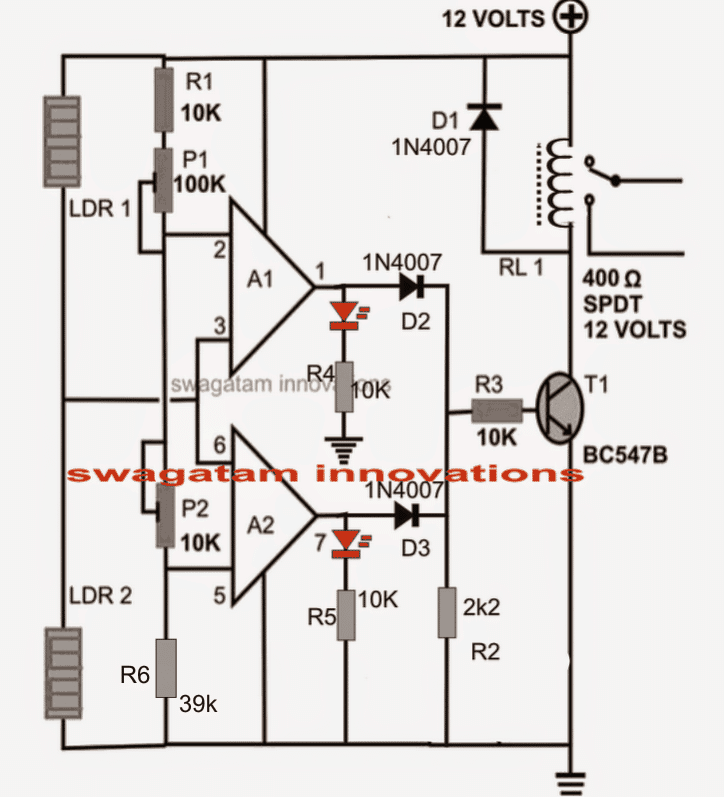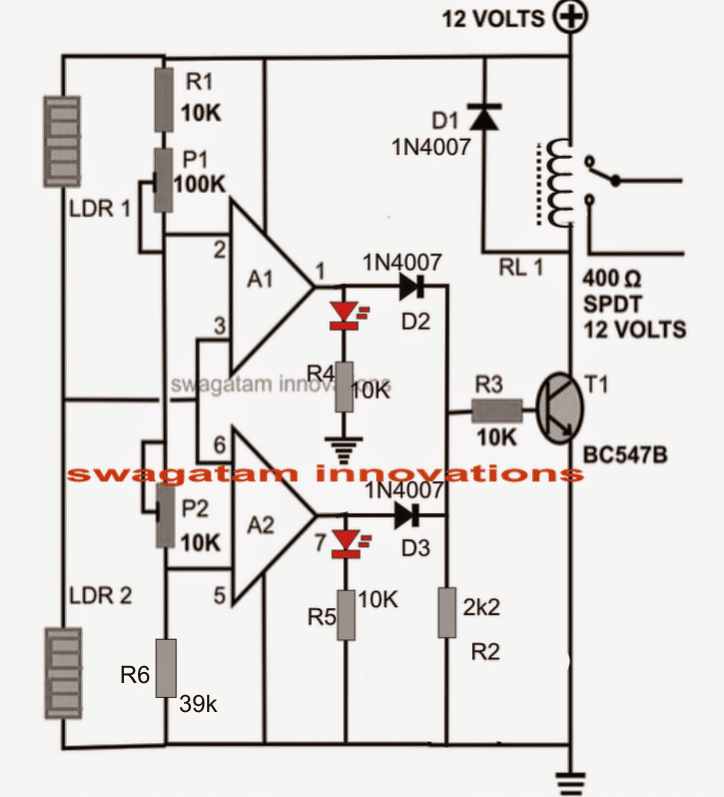Here I have explained how to build a simple LDR based motion detector sensor circuit using ordinary parts such as LDRs and opamps, reasonably accurately.
What are Motion Detectors
Motion detector or sensor alarm is a device which detects the presence of a motion or movement within a certain fixed range and raises an alarm on doing so.
You might find many electronic circuits related to motion sensing but most of them incorporate shadow detection through a single LDR, which does not work very effectively.
Because a shadow might not always be very sharp enough and at times the circuit may just fail to interpret it.
The present motion detector/sensor circuit is also based on similar principles but it detects a motion by differentiating the light level using two LDRs, this makes the system more sensitive and works irrespective of the shadow intensity.
Circuit Operation
The circuit diagram shows a simple configuration consisting of a couple of opamps from the IC LM324.
The two opamps are arranged in a differential mode and as comparators.
Both the comparators consists of their own discrete light sensing components in the form of LDRs.
The presets provided with the opamps decide at what point the outputs of the both the opamps remain on the same level, that is at zero potential.
Also the above condition is met when the light level over both the LDRs are approximately at the same levels.
However the moment the light level (or the shade level) on the LDRs differ even slightly, the comparators instantly detects this and one of the relevant opamp outputs goes high.
The transistor at the output immediately triggers and activates the relay and the connected alarm mechanism.
The LDRs must be positioned at least a feet apart for proper optimization of the detection level.
Also the LDRs and the nit itself must be positioned in such a way that the ambient light directly become incident over the sensors.

How to Set Up the Circuit.
You will require a lot of dexterity for setting up the circuit accurately. It may be done as follows:
Let a constant source of light fall on the LDRs with uniform intensity.
Now without letting any of your body part disturbing the light source, gently and skilfully adjust the two presets such that both the LEDs just shut off.
That's it, your circuit is now all set and ready to detect even the slightest of motions across any of the LDRs.
However it must be ensured that the light source intensities on the LDRs does not change, or else the set up could get rattled.
